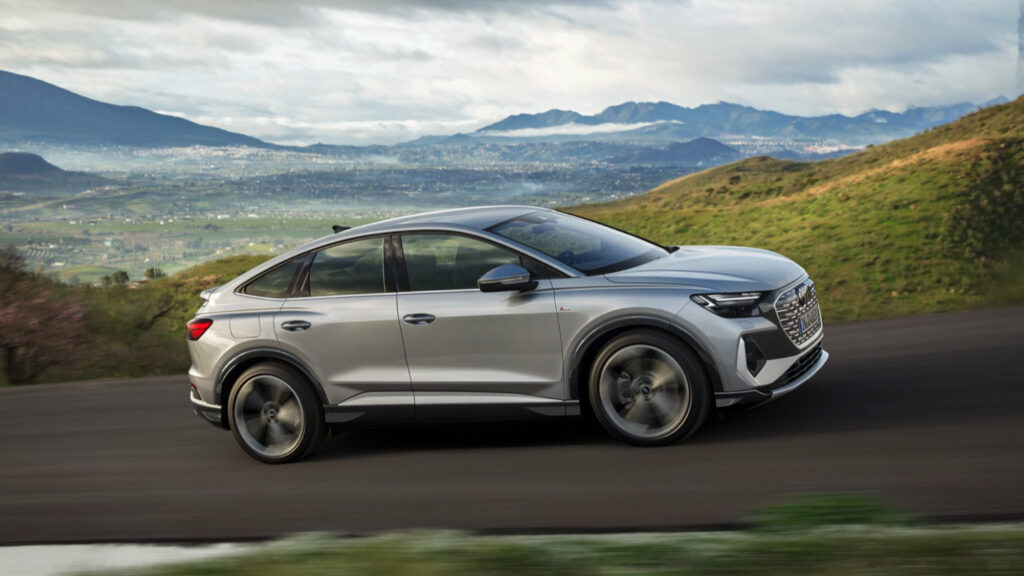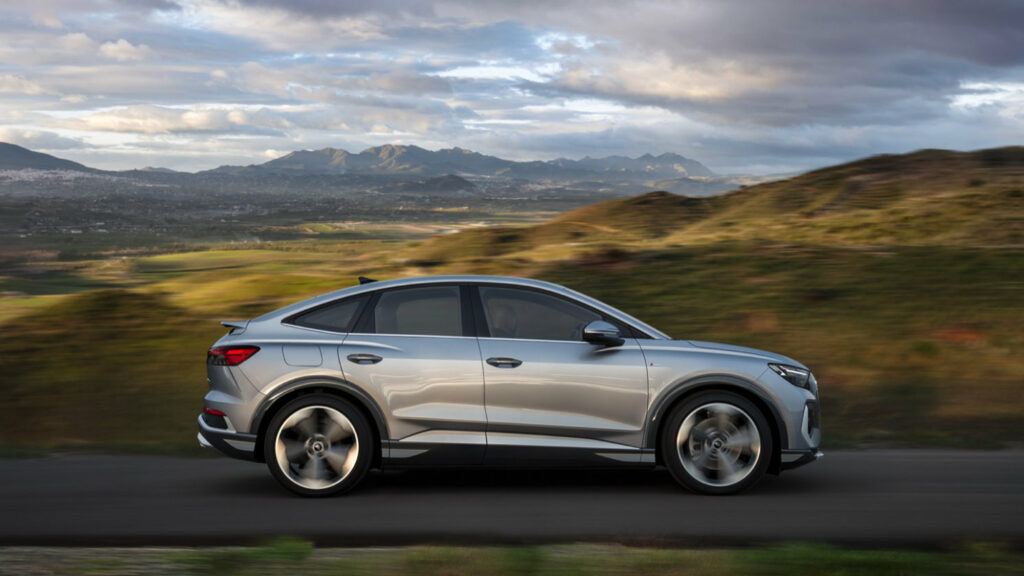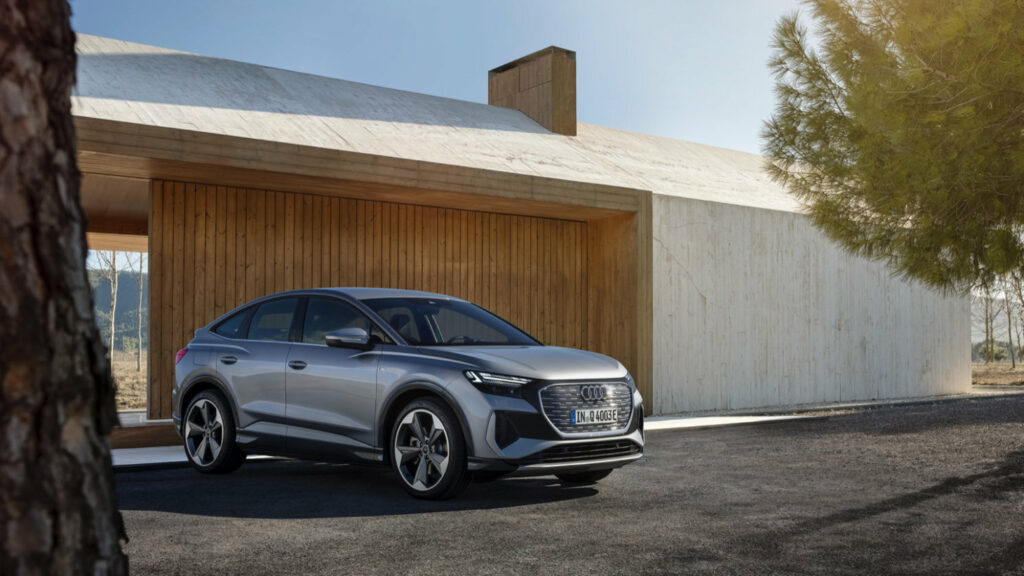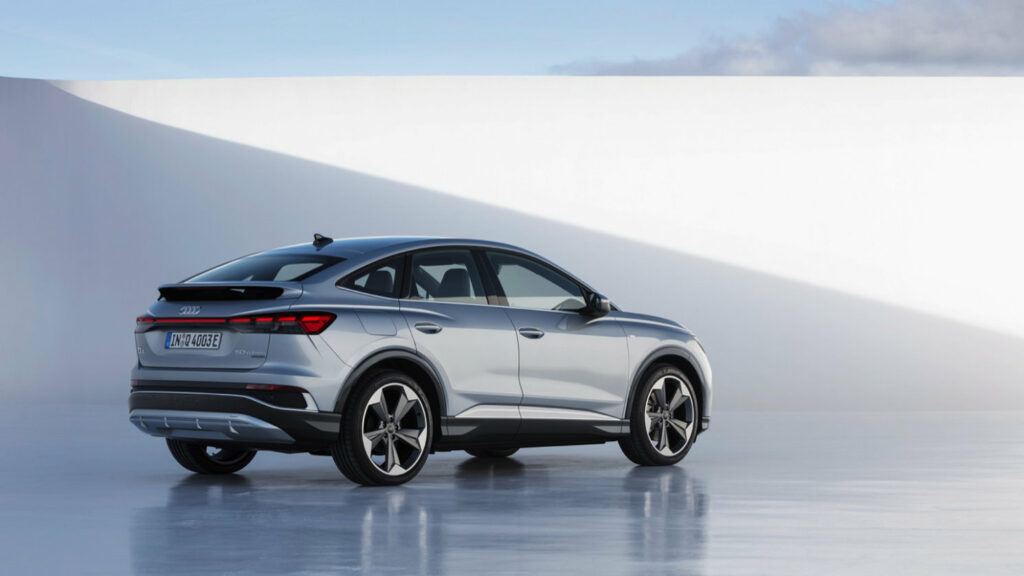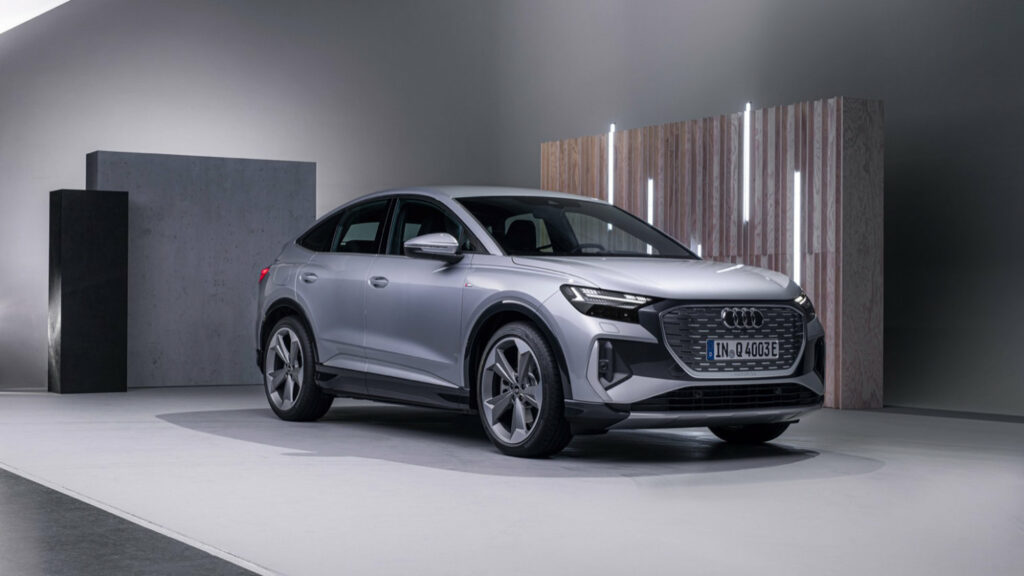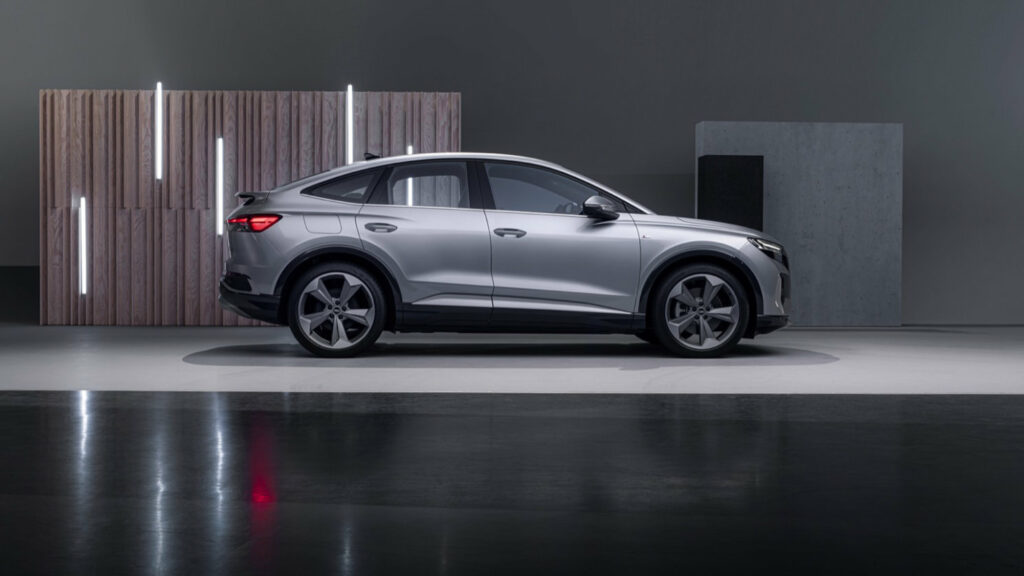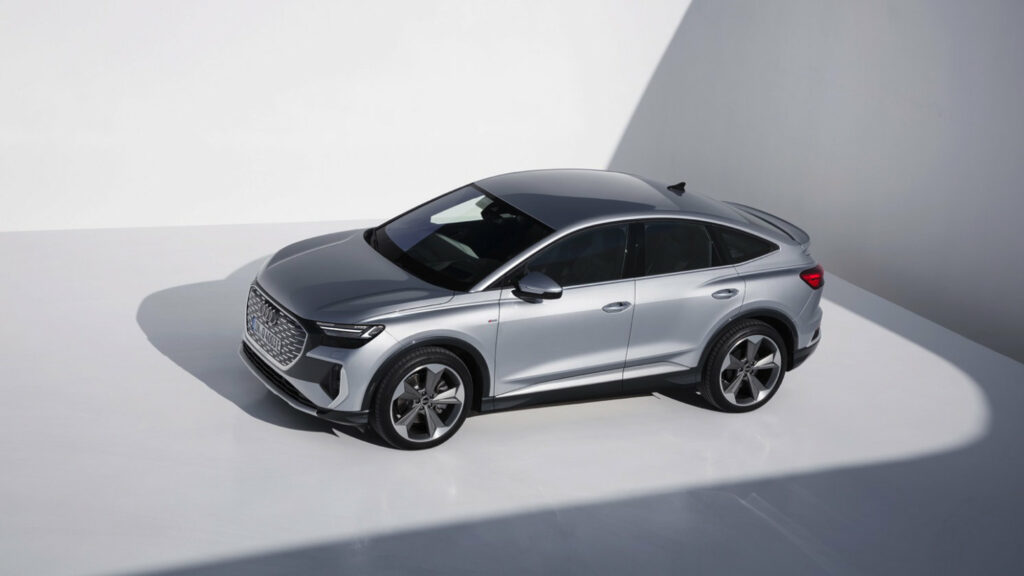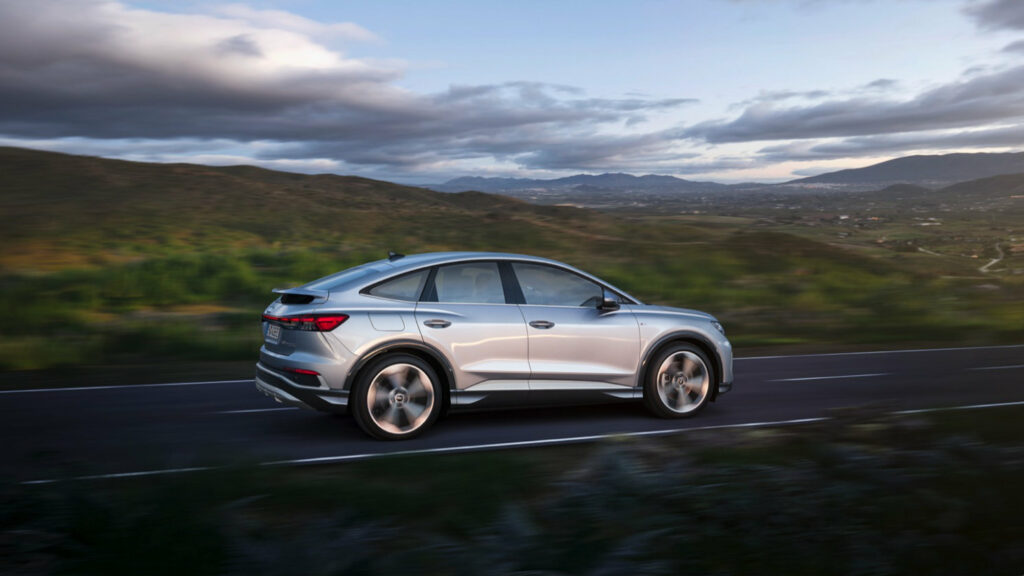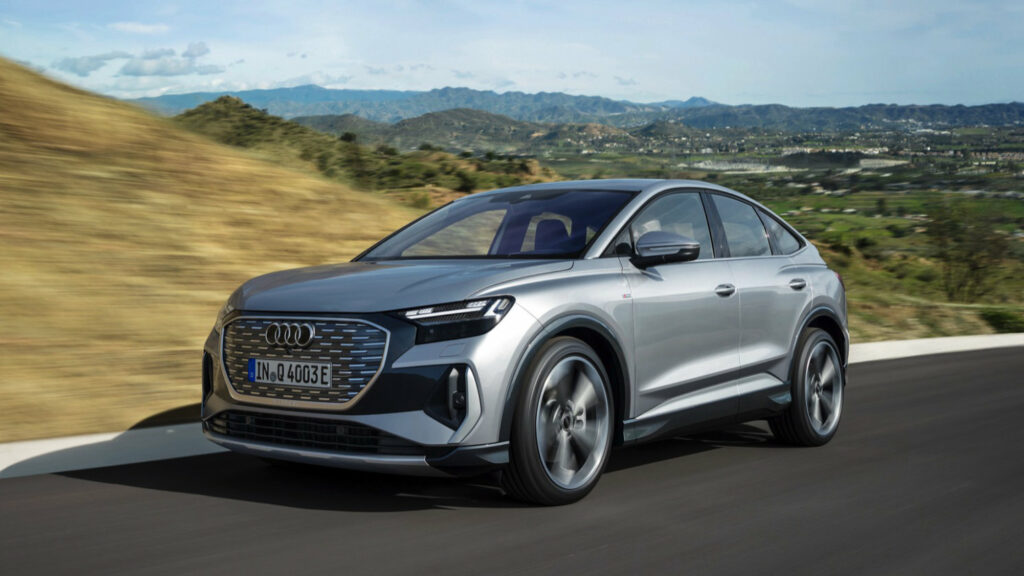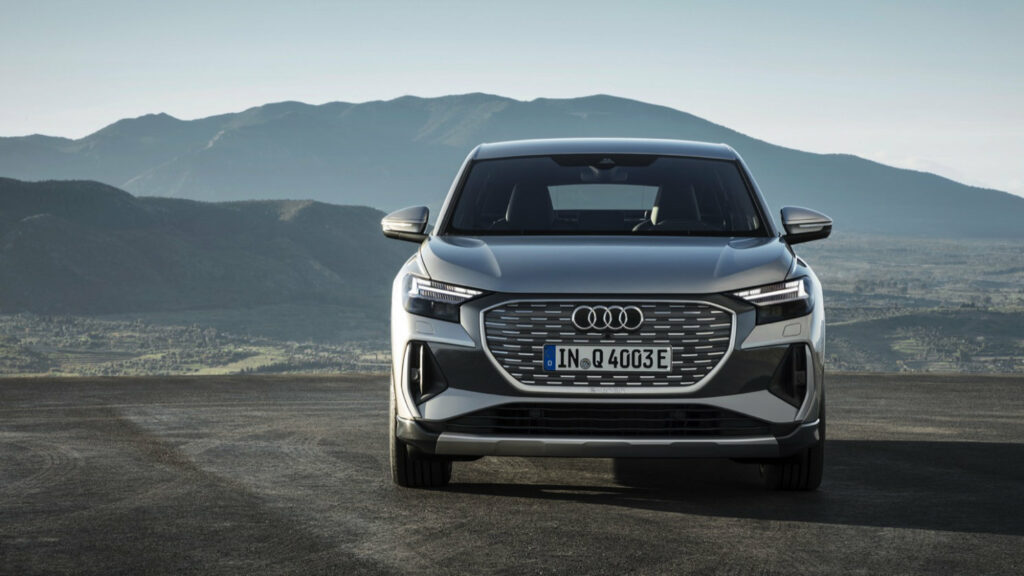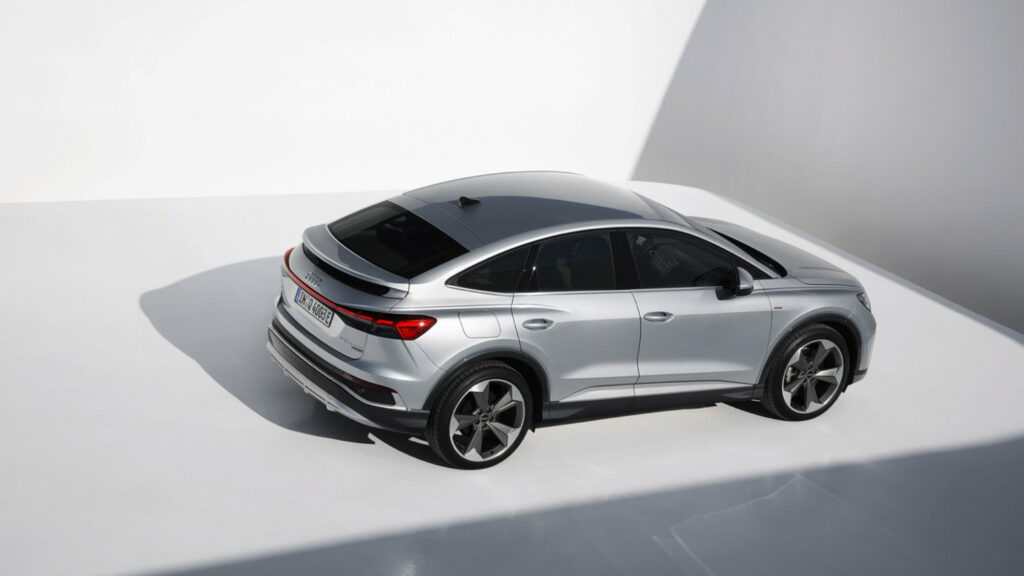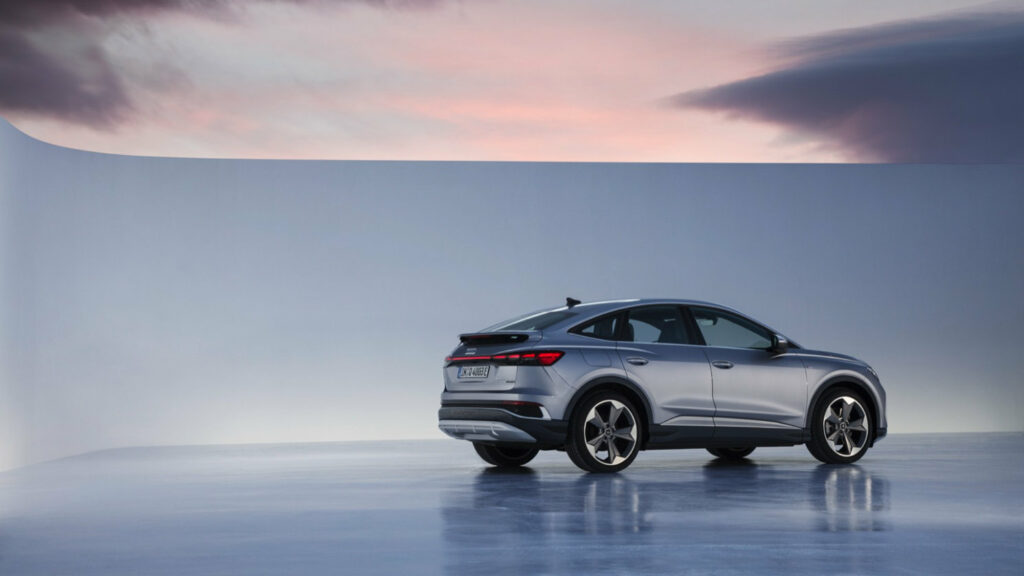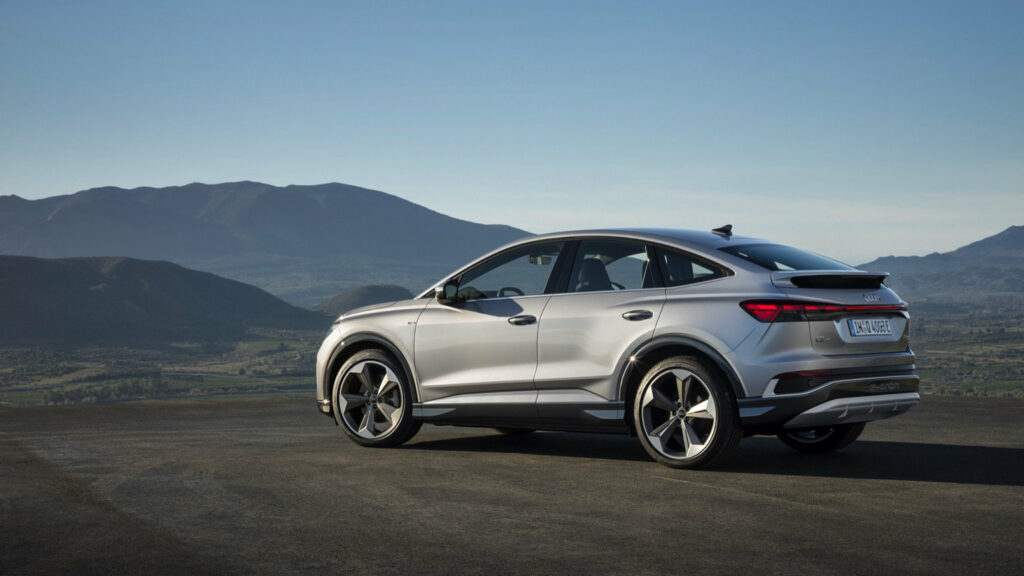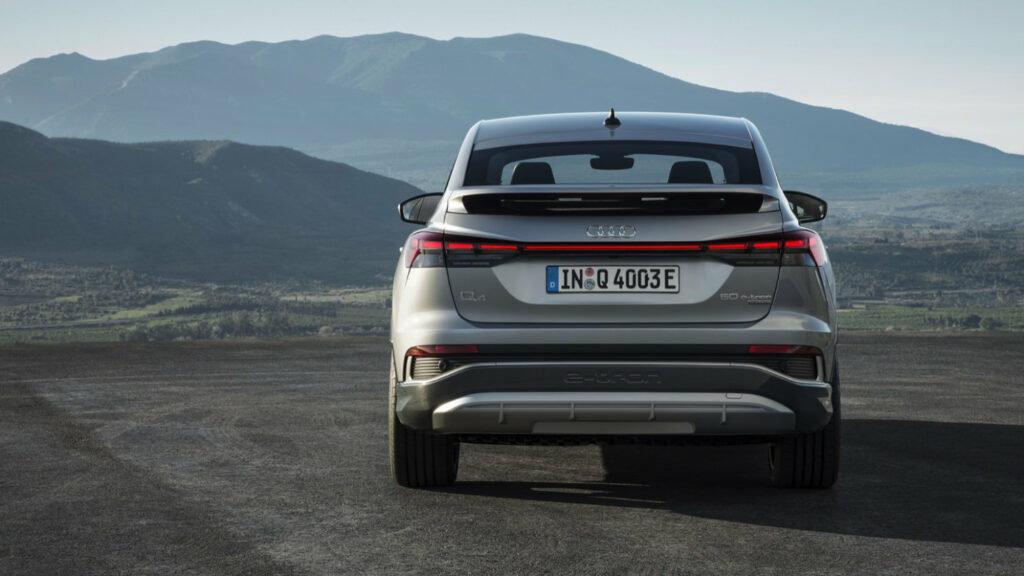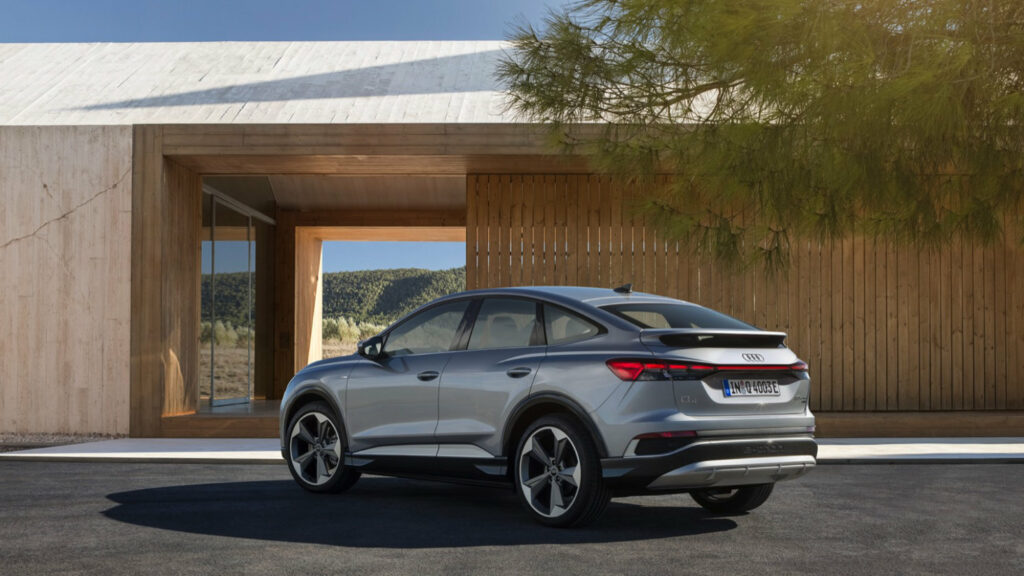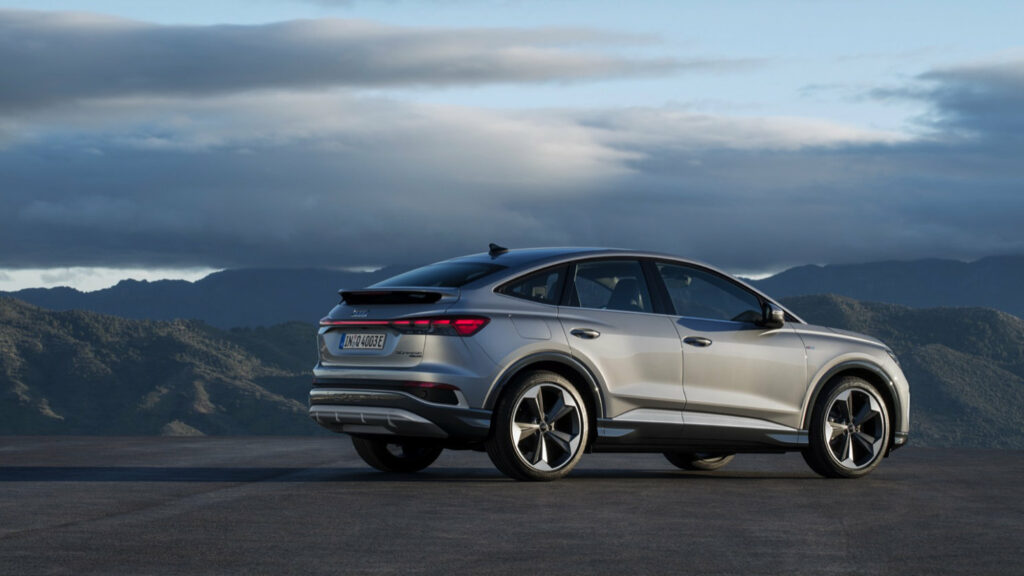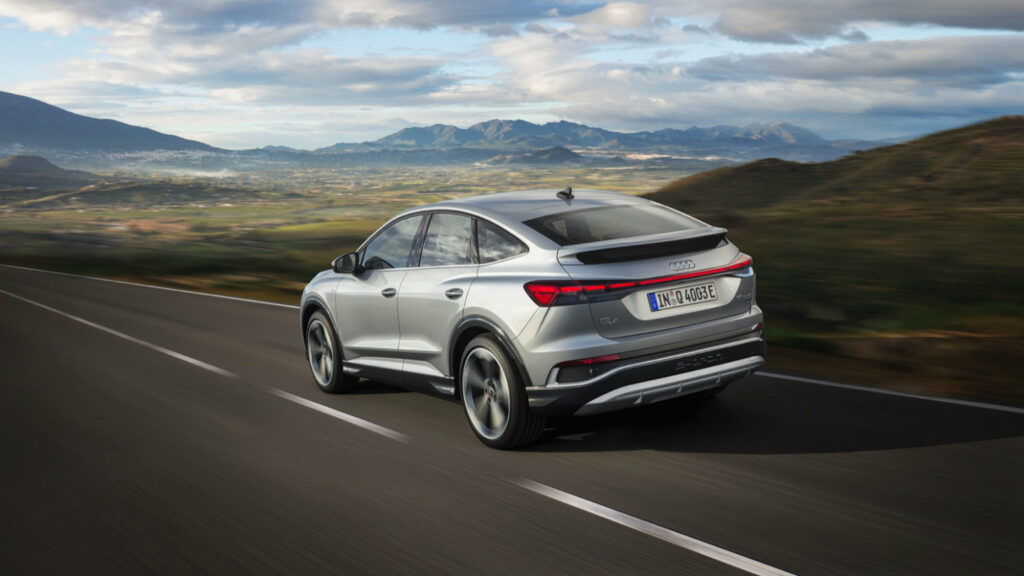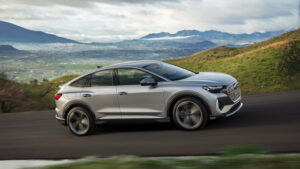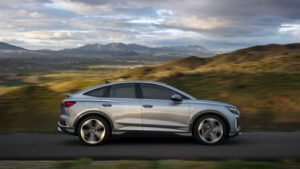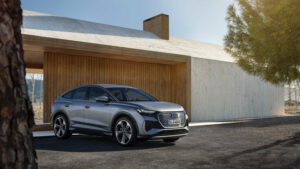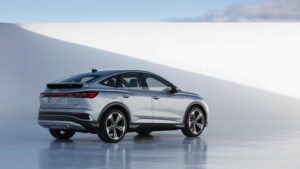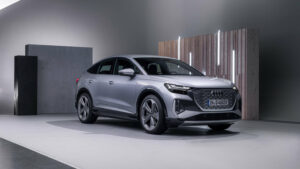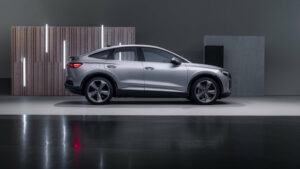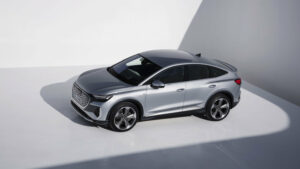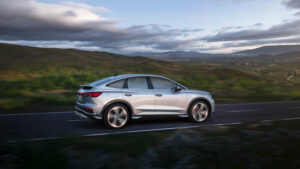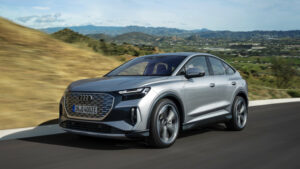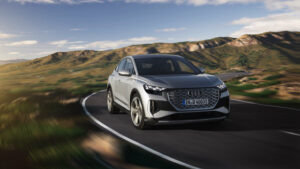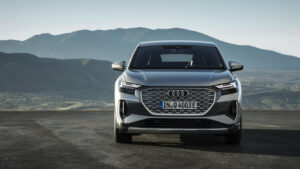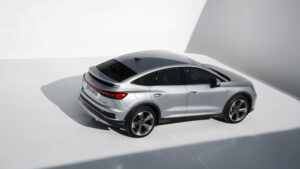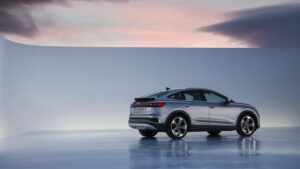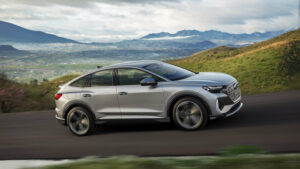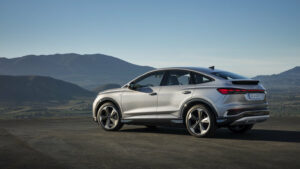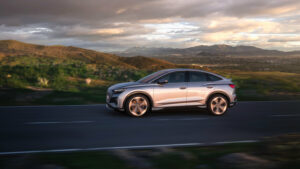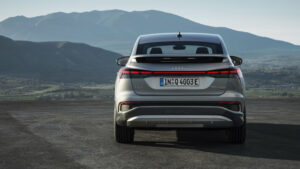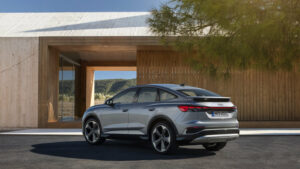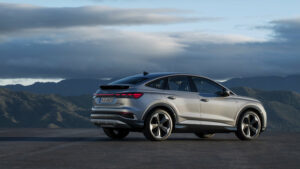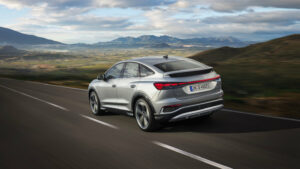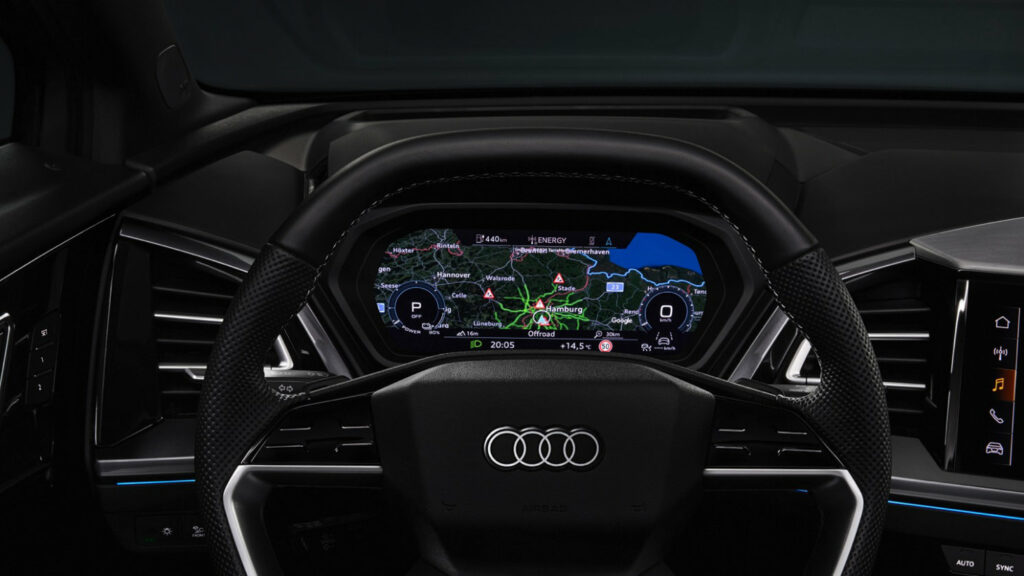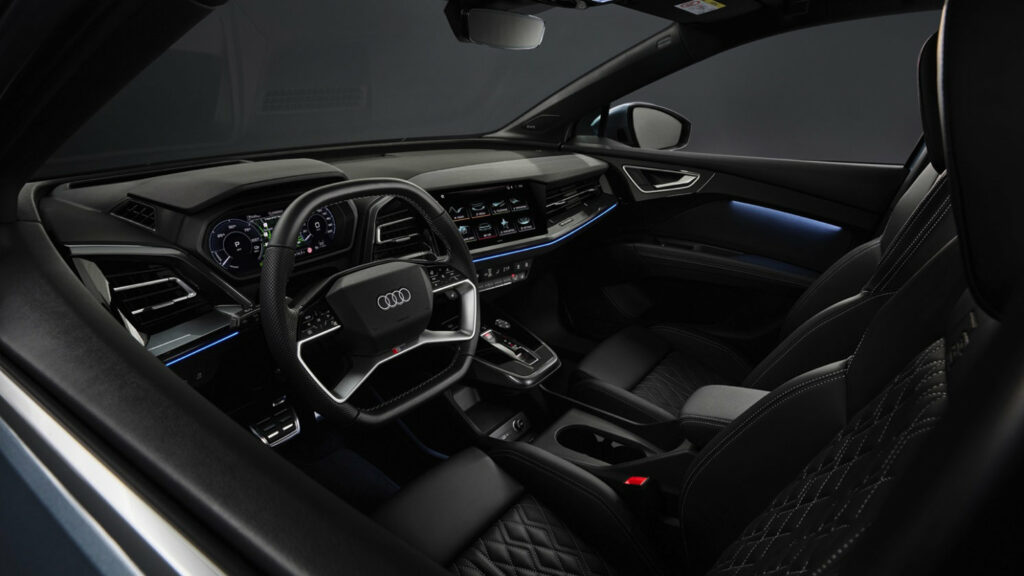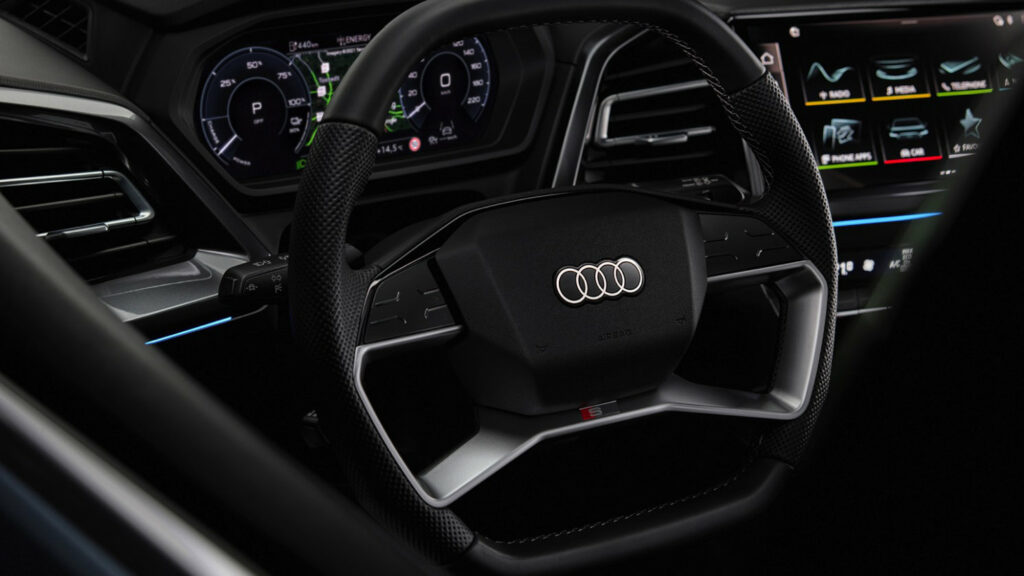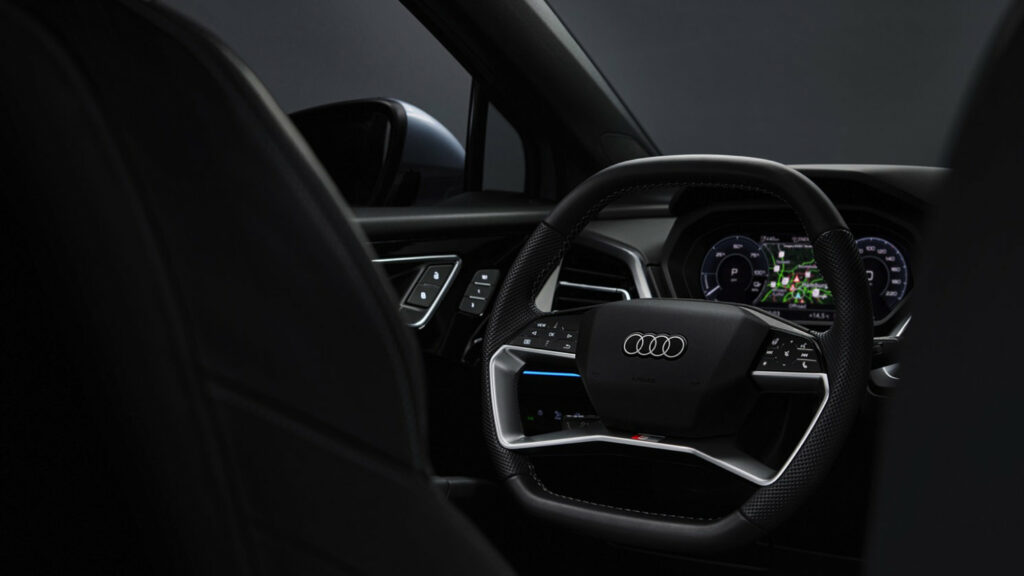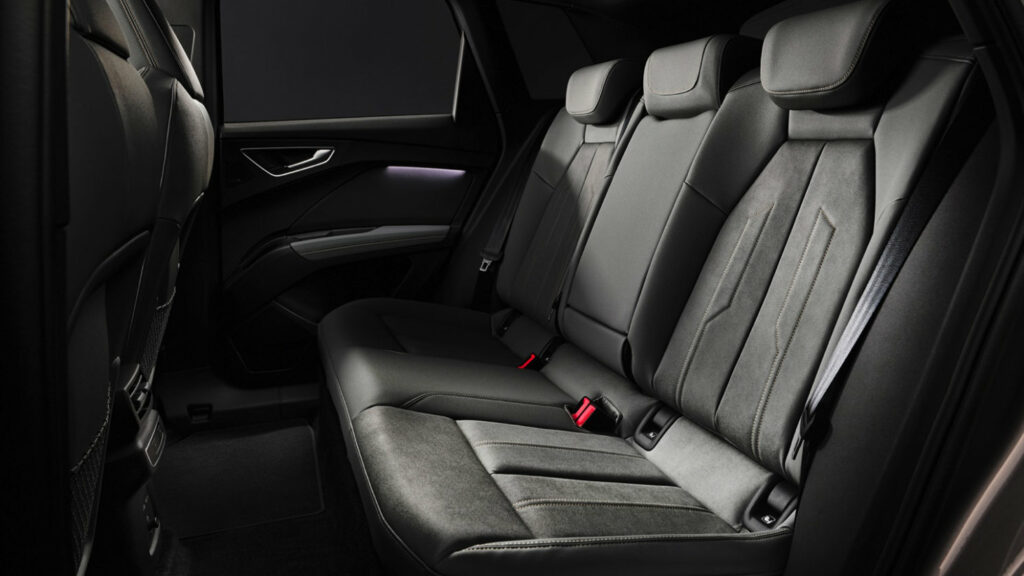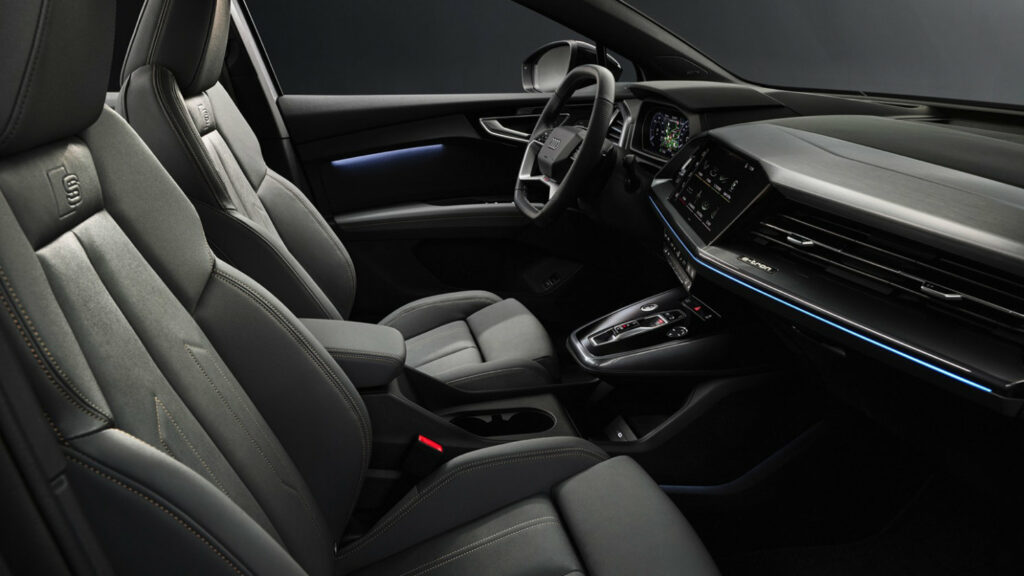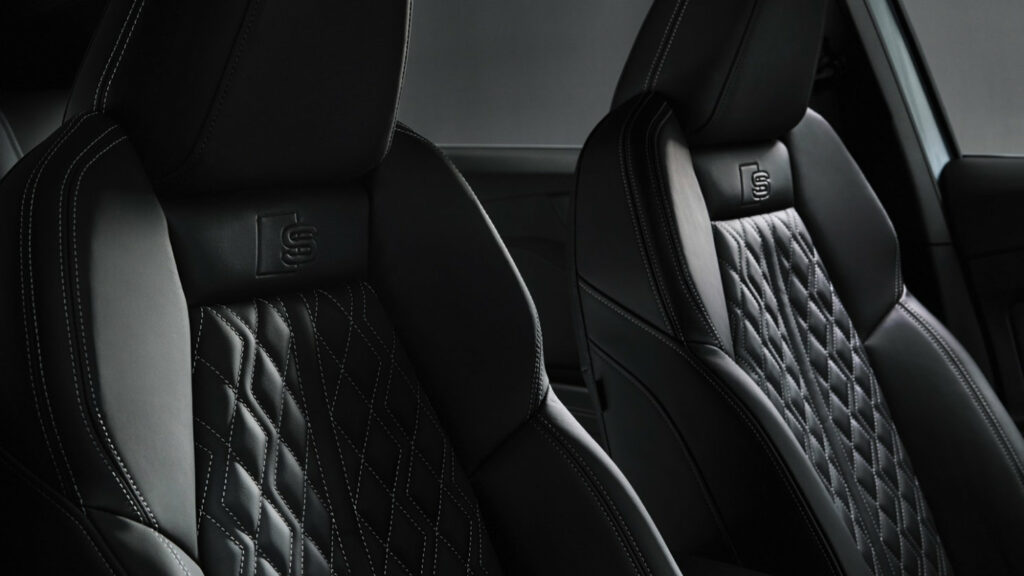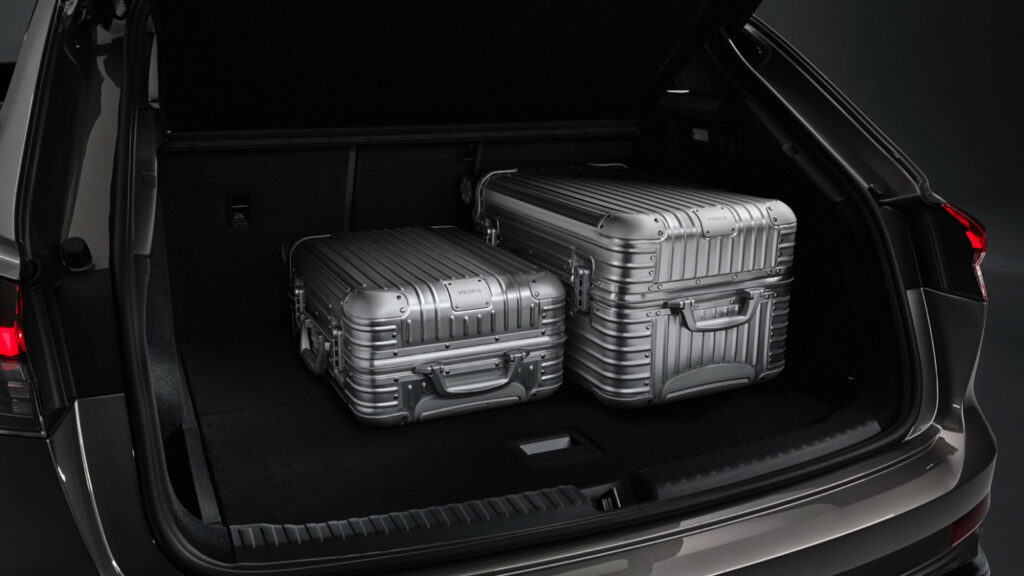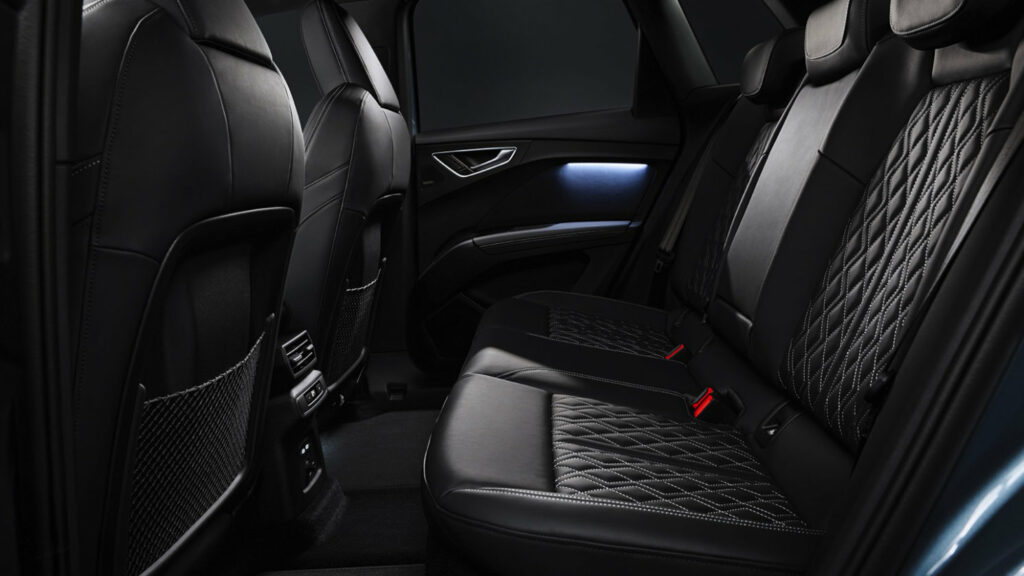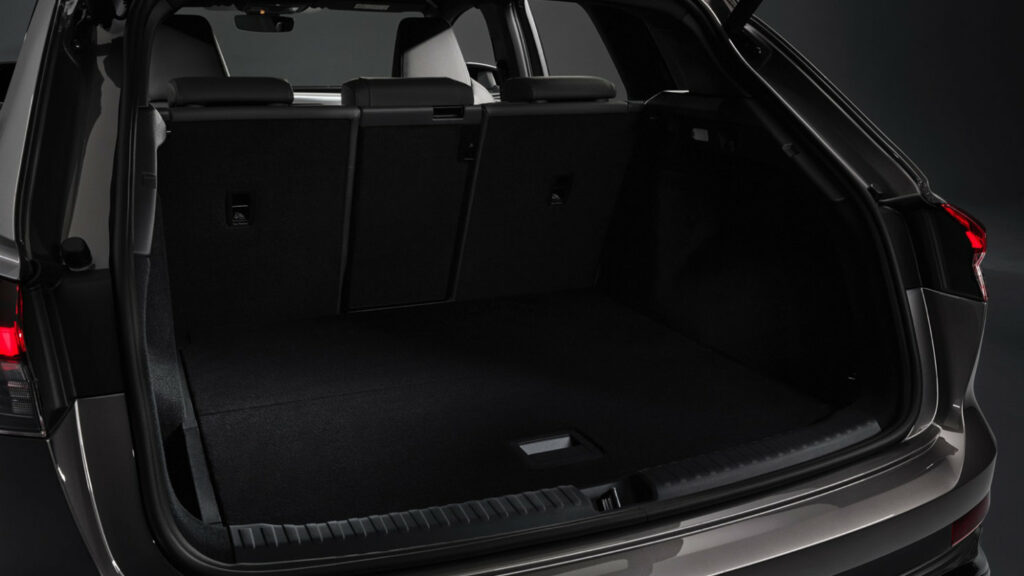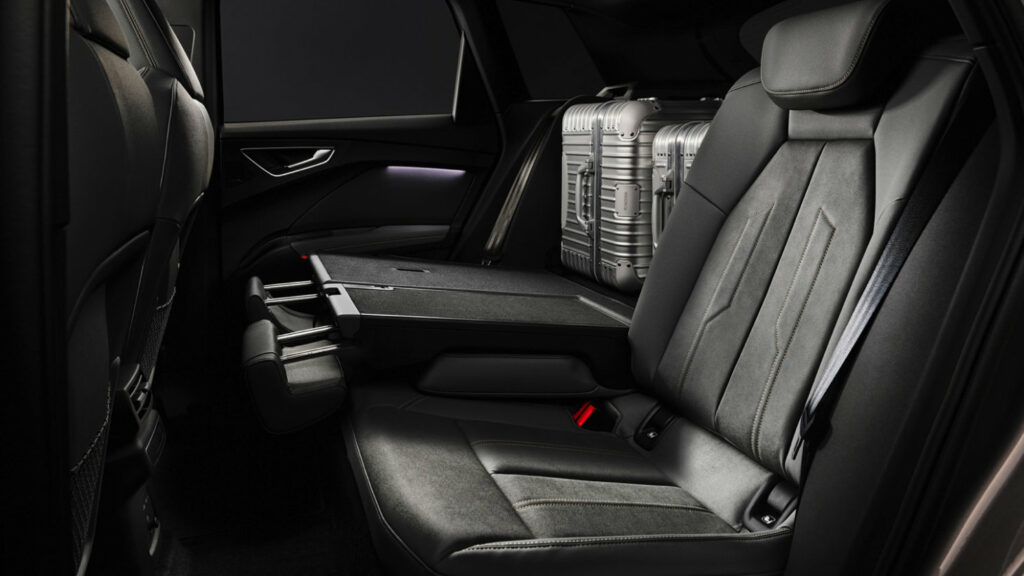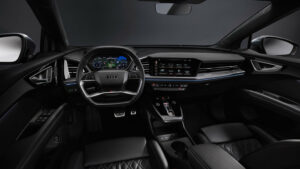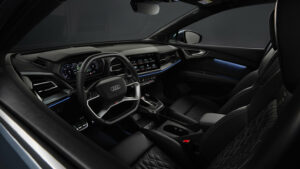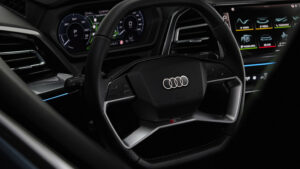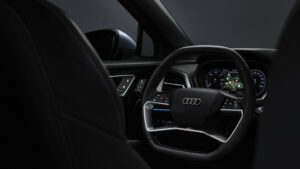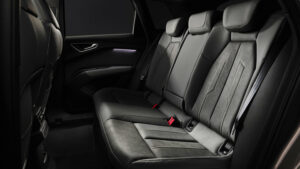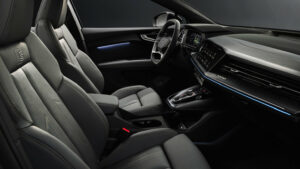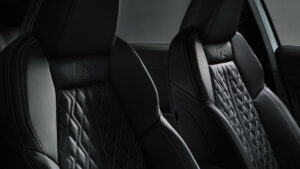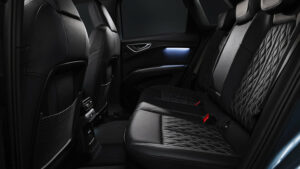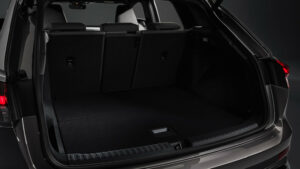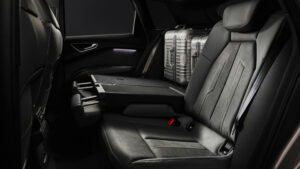Audi Q4 Sportback e-tron 35
The Audi Q4 Sportback e-tron 35 is an electric off-road coupe, part of the Audi e-tron range of electric vehicles. It features an elegant and stylish exterior design, a sloping roof line, and an aggressive front fascia. The car is powered by a 55 kWh battery and has a range of up to 430 km (WLTP cycle) on a single charge.
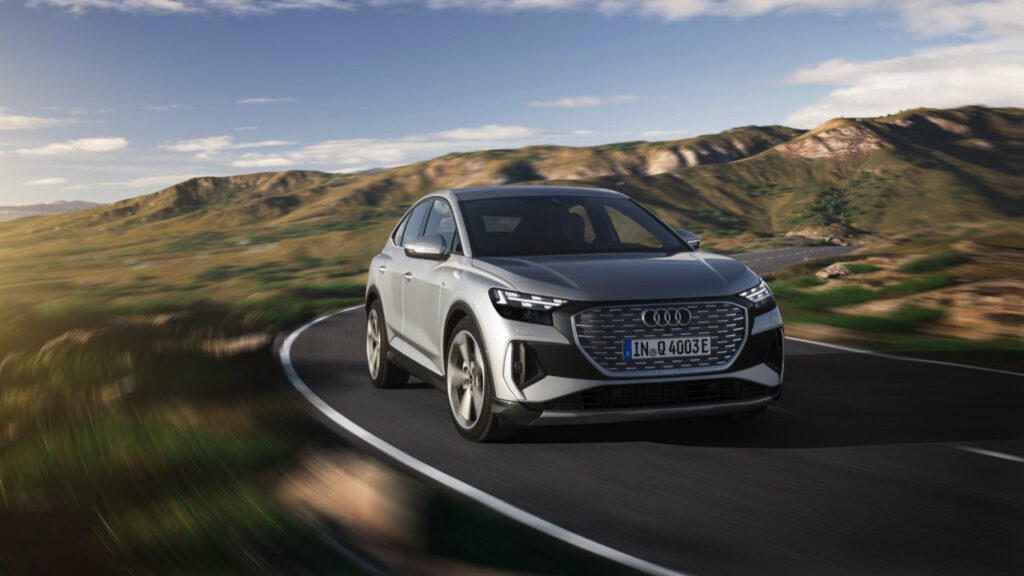
The Q4 Sportback e-tron 35 is equipped with a dual engine, one that powers the front wheels and one that powers the rear wheels. This gives the car all-wheel drive capability and a total power output of 125 kW, 310 Nm. The car accelerates from 0 to 100 km/h (60 mph) in 9 seconds and reaches a top speed of 160 km/h.
Inside, the Q4 Sportback e-tron 35 is equipped with advanced technology and features, including a digital cockpit display, an infotainment system with a 10.1-inch touchscreen, and a number of driver assistance systems such as adaptive cruise control and lane departure warning.
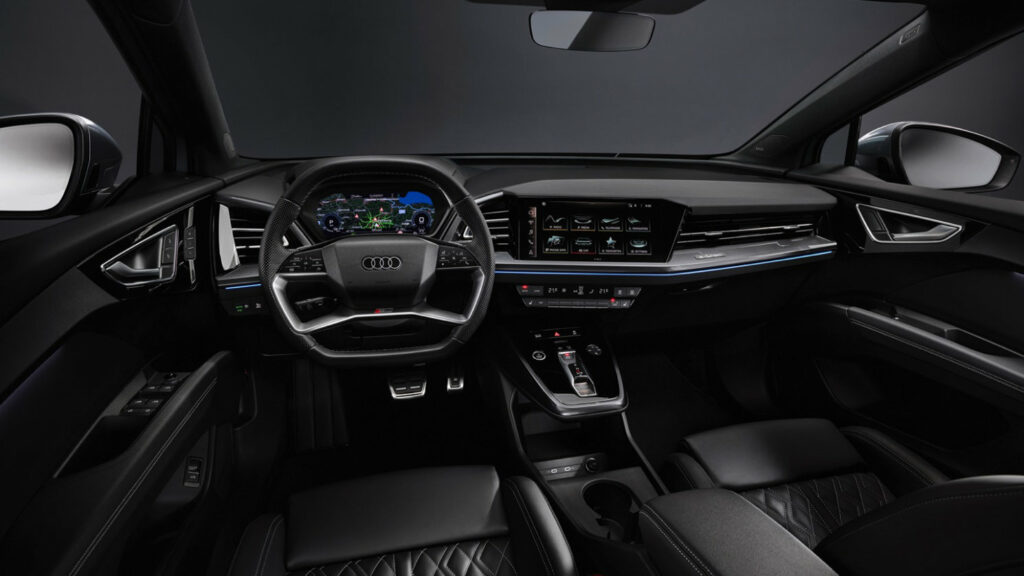
Overall, the Audi Q4 Sportback e-tron 35 is a stylish and capable electric vehicle that offers a great balance of performance, range, and technology.
| Performance | |
| Acceleration 0 – 100 km/h | 9.0 sec |
| Top Speed | 160 km/h |
| Electric Range | 295 km |
| Total Power | 125 kW (170 PS) |
| Total Torque | 310 Nm |
| Drive | Rear |
| Battery and Charging | |
| Battery Capacity | 55.0 kWh |
| Battery Useable | 51.5 kWh |
| Europe | |
| Charge Port | Type 2 |
| Port Location | Right Side – Rear |
| Charge Power | 7.2 kW AC |
| Charge Time (0->295 km) | 8h30m |
| Charge Speed | 35 km/h |
| Fastcharge Port | CCS |
| FC Port Location | Right Side – Rear |
| Fastcharge Power (max) | 100 kW DC |
| Fastcharge Time (30->236 km) | 30 min |
| Fastcharge Speed | 410 km/h |
| Click here for all charging information | |
| Energy Consumption EVDB Real Range | |
| Range | 295 km |
| Vehicle Consumption | 175 Wh/km |
| CO2 Emissions | 0 g/km |
| Vehicle Fuel Equivalent | 2.0 l/100km |
| WLTP Ratings (TEL) | |
| Range | 349 km |
| Rated Consumption | 166 Wh/km |
| Vehicle Consumption | 148 Wh/km |
| CO2 Emissions | 0 g/km |
| Rated Fuel Equivalent | 1.9 l/100km |
| Vehicle Fuel Equivalent | 1.7 l/100km |
| WLTP Ratings (TEH) | |
| Range | 313 km |
| Rated Consumption | 187 Wh/km |
| Vehicle Consumption | 165 Wh/km |
| CO2 Emissions | 0 g/km |
| Rated Fuel Equivalent | 2.1 l/100km |
| Vehicle Fuel Equivalent | 1.8 l/100km |
| TEL = Test Energy Low | TEH = Test Energy High | |
| Rated = official figures as published by manufacturer. Rated consumption and fuel equivalency figures include charging losses. | |
| Vehicle = calculated battery energy consumption used by the vehicle for propulsion and on-board systems. | |
| Real Energy Consumption Estimation | |
| between 120 – 245 Wh/km | |
| City – Cold Weather | 181 Wh/km |
| Highway – Cold Weather | 245 Wh/km |
| Combined – Cold Weather | 210 Wh/km |
| City – Mild Weather | 120 Wh/km |
| Highway – Mild Weather | 191 Wh/km |
| Combined – Mild Weather | 154 Wh/km |
|
Energy use for each trip will vary considerably depending on the driver and the conditions. Therefore, we have provided a range of estimates which can be useful in developing an understanding of the potential benefits of this technology. |
|
| Dimensions and Weight | |
| Length | 4588 mm |
| Width | 1865 mm |
| Width with mirrors | 2108 mm |
| Height | 1614 mm |
| Wheelbase | 2764 mm |
| Weight Unladen (EU) | 1970 kg |
| Gross Vehicle Weight (GVWR) | 2475 kg |
| Max. Payload | 580 kg |
| Cargo Volume | 535 L |
| Cargo Volume Max | 1460 L |
| Cargo Volume Frunk | 0 L |
| Roof Load | 75 kg |
| Tow Hitch Possible | Yes |
| Towing Weight Unbraked | 0 kg |
| Towing Weight Braked | 0 kg |
| Vertical Load Max | 75 kg |
| Miscellaneous | |
| Seats | 5 people |
| Isofix | Yes, 3 seats |
| Turning Circle | 10.2 m |
| Platform | VW MEB |
| Car Body | SUV |
| Segment | JC – Medium |
| Roof Rails | Yes |
| EV Dedicated Platform | Yes |
Home and Destination Charging (0 -> 100%)
A public charging station is required to use the highest possible charging rate. The EVSE/charging station’s charging capacity affects how long it takes to fully charge the battery. The table below shows all possible options for fully charging the Audi Q4 Sportback e-tron 35.
In Europe, plugging an electric car into an outlet is often as easy as plugging it into a household outlet, but there are differences from country to country. The table below shows the different ways to charge the Audi Q4 Sportback e-tron 35, but in some countries some chargers may not be available.
Type 2 (Mennekes – IEC 62196)
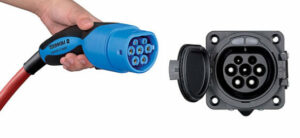
| Charging Point | Max. Power | Power | Time | Rate |
| Wall Plug (2.3 kW) | 230V / 1x10A | 2.3 kW | 26h30m | 11 km/h |
| 1-phase 16A (3.7 kW) | 230V / 1x16A | 3.7 kW | 16h30m | 18 km/h |
| 1-phase 32A (7.4 kW) | 230V / 1x31A | 7.2 kW | 8h30m | 35 km/h |
| 3-phase 16A (11 kW) | 230V / 2x16A | 7.2 kW | 8h30m | 35 km/h |
| 3-phase 32A (22 kW) | 230V / 2x16A | 7.2 kW | 8h30m | 35 km/h |
Fast Charging (10 -> 80%)
If you want to enjoy driving an electric car, one of the most important features to consider is the number of miles per hour the car can travel while charged. This is called the “range” of the car. All electric cars have a certain range, even if they are 100% charged. This is because they do not have an internal combustion engine to lean on if you need to drive a long distance.
Max. Power: The maximum power provided by the charging point
Avg. Power: The average power provided by the charging point during a session of 10% to 80%.
Time: the time it takes to charge from 10% to 80%
Speed: the average charging rate during the session of 10% to 80%
Combined Charging System (CCS Combo 2)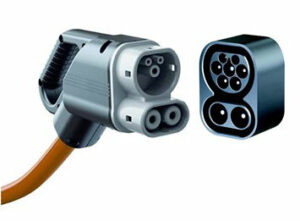
| Charging Point | Max. Power | Power | Time | Rate |
| Wall Plug (2.3 kW) | 230V / 1x10A | 2.3 kW | 26h30m | 11 km/h |
| 1-phase 16A (3.7 kW) | 230V / 1x16A | 3.7 kW | 16h30m | 18 km/h |
| 1-phase 32A (7.4 kW) | 230V / 1x31A | 7.2 kW | 8h30m | 35 km/h |
| 3-phase 16A (11 kW) | 230V / 2x16A | 7.2 kW | 8h30m | 35 km/h |
| 3-phase 32A (22 kW) | 230V / 2x16A | 7.2 kW | 8h30m | 35 km/h |
| Brand | Audi |
| Model | Q4 Sportback e-tron 35 |
| Body Style | SUV |
| Car Engine | electric |
| Motor power | 125 |
| Maximum Torque, Nm | 310 |
| Battery Energy, kWh | 55.0 |
| Power reserve (NEDC/EPA/WLTP), km | - / - / 430 |
| Level Charging (230/400/DC), hours | - / 8,30 / 0,30 |
| Electrical Acceleration, 0-100 km/h (0-62.1 mph) in sec | 9.0 |
| Top Speed, km/h | 160 |
